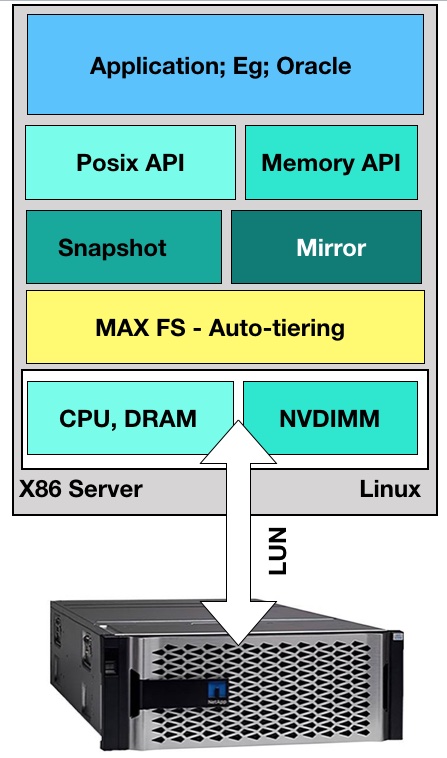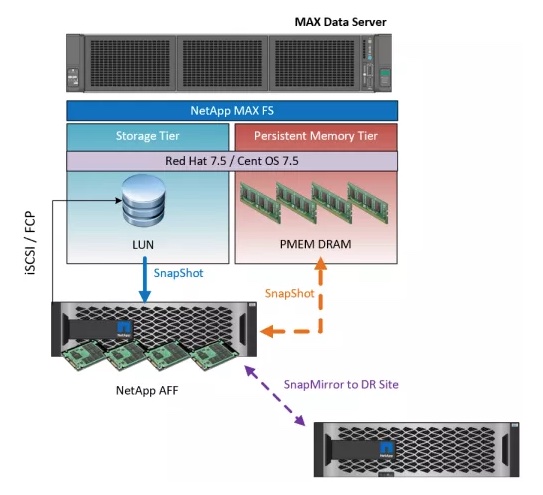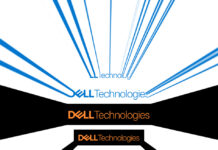Las Vegas NetApp has plunked MAX Data server data access speed-up technology on to the development road map for the company’s Elements HCI.
MAX Data is server-side software, installed and run on existing or new application servers to accelerate applications. Data is fetched from a connected NetApp array and loaded into the server’s storage class memory, meaning Optane currently.
MAX Data supports a memory tier of DRAM, NVDIMM and Optane DIMM with a storage tier of a NetApp AFF array. Server apps get faster access to data because it is served from/to an Optane cache fed by the ONTAP array and receives its data to be stored.

The same principle – using a MAX Data storage-class memory cache in servers that access a shared block storage resource – is applicable to the Elements hyperconverged infrastructure architecture.
The more IO-bound the application, the greater the server speed-up benefit from using MAX Data.
Adam Carter, chief product architect for HCI at NetApp, told Blocks & Files about the roadmap status of MAX Data for Elements HCI today. He thinks the addition is very sensible.
We think juicing Elements HCI with MAX Data would give NetApp a distinctive feature to differentiate it from near-HCI competitor Datrium. Also it could open a performance gap with rival HCI systems targeting the enterprise, such as Dell EMC’s VxRail and Nutanix.
Carter pointed to the ongoing migration of ONTAP data services to Elements HCI, with SnapMirror already moved across. This will add to Elements HCI’s enterprise credentials.
There is no committed delivery date for MAX Data on Elements HCI.








